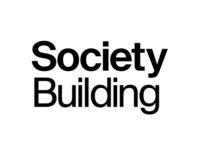Editor’s Award
Bridge of Aspiration by WilkinsonEyre
Bridge of Aspiration in London was presented at the AT Awards live finals on 18 September 2024. Learn about how the project has stood the test of time.
Located high above Floral Street in London’s Covent Garden, the Bridge of Aspiration connects The Royal Ballet School to the Royal Opera House, allowing dancers to move freely between the two buildings. Designed by WilkinsonEyre, the elegant twisting structure is intended to evoke the fluidity and grace of dance, as well as provide an eye-catching landmark for the school and its connection to the world-famous performance venue next door.
The form of the crossing is dictated by the different levels and skewed alignment of the landing points. An aluminium spine beam supports a concertina of 23 square portals with glazed intervals. These rotate in sequence, with each portal moving four degrees relative to its neighbour, resulting in the entire structure performing a quarter turn along its length.
Internally, the twisting structure provides an engaging spatial experience as the user navigates through dynamic and varying volumes. The glazed sides, consisting of two clear and two opaque panels, intertwine and overlap, maintaining privacy by concealing the floor inside and preventing views into 44 Floral Street. They also allow unobstructed views east and west down Floral Street, further enhancing the overall experience.
The judges said:
“Playful and poetic, the Bridge of Aspiration is a gift to the city that never ceases to be surprising, yet somehow looks as though it was always meant to be there.”
The ‘sculpture in the sky’ gives students from the Royal Ballet School access to the Royal Opera House. While many people walk along Floral Street without noticing the bridge, it is an unexpected treat for those who happen to look up.
Jim Eyre from WilkinsonEyre reflects on the Bridge of Aspiration’s genesis, evolution and lasting appeal
I was very pleased that we won the competition. I just felt that it was one of those ideas that would be hard for them to resist. It just felt so right for this particular project – this interesting object up in the sky in the street.
There were some very specific requirements in the brief. It had to be at high level to connect these two institutions, so that life could carry on in the street below. And we had to preserve the modesty of the young ballet students. You shouldn’t be able to see their legs. When you were way below, looking up at them, there had to be a limit to what you could see.
The two sides did not connect in any obvious way. They were slightly different levels, in a slightly different plan alignment, so both horizontally and vertically misaligned. And that was quite a challenge, because when you’re designing a bridge one tends to think one could do some sort of minimal structure, all neat and glazed and simple, but actually you’ve got to accommodate this double offset. And that made anything rectangular and ordered rather difficult and led us to think of something else.
Our early sketches started to generate this idea of something that might twist, and were followed very rapidly by the idea of a series of picture frames that would gradually turn through 90 degrees across the width of the street, which is ten-to-twelve metres across. I just loved the idea of the kind of dynamic that it would create, which would somehow speak of movement and dance.
We quickly tested the idea to make sure there was enough head room and width to get it to work with this set of twisting frames. Then we worked out exactly what the geometry would need to do and where the handrails would fit, and how the bannisters would come off the frame, so they themselves would effectively have a twisting alignment. We could see that there could be a space for structure at the base, which could be completely internal and unseen. So you would just see the frames and the glazed cladding. We modeled it up on computers using the best information we had to establish the geometry. It was incredibly sensitive to the actual measured distances so every time anything changed even slightly, we had to completely remodel it.
The most challenging part was to work out how to create the frames and accommodate the twisting geometry, because every plane of glass in between the frames had to accommodate an offset; a slight shift from one side of the mullion to the other. We developed an idea that used aluminium extrusions with an oak infill, which could accommodate the glazing coming in at slightly strange angles onto each mullion. The big appeal was that the contrast between the oak and the aluminium would actually serve to accentuate the changing geometry; the twisting form.
The twisting form, the combination of clear and opaque glass, and the proximity of the mullions to each other – I think they’re about 300mm apart – obscure the view to 44 Floral Street. So you can’t see in as you cross the bridge. The structure itself is like a sort of boat hidden inside the bridge. It’s an aluminum beam made up from a series of frames, designed in conjunction with Ian Firth from what was then Flint & Neill.
Once we got planning approval we were able to form the openings on either side. We had to completely remeasure and remodel the design to get the precise geometry right. Then it was tendered and an Austrian company called GIG won it. We handed over our information, including our 3D model, and they picked it up and produced the fabrication drawings. They did an amazing job developing it and getting it absolutely right.
The whole structure came to Acton from Austria for its final assembly. It was then lifted by crane and attached to a lorry which drove to Covent Garden in the very early hours of Sunday morning before anyone was about. The bridge was opened by the Queen. One of the Sainsburys, whose wife had been a ballet dancer, funded the project, which we were very pleased about.
Speirs + Major designed the lighting with us and fitted these little LED luminaires within the ends of the extrusion. We reckoned that taking the whole line would have been too much, and that a little bit on the corners would work really well with the twisting form. You get this nice quality of light as you go over the bridge, and a bit of a glow from the street below.
People walking down the street don’t always notice it. But others do. It’s something you discover if you happen to look up. People want to cross it, but they can’t, because it’s for young kids who are learning to become ballet dancers. So it’s not really open to the public at all, but it’s an interesting sculptural object in the street.
I think that another reason it’s so magical is that it speaks of dance. It got renamed Bridge of Aspiration, which I think is very appropriate. The students are studying to be ballet dancers. They aspire to perform.
Our awards sponsors











